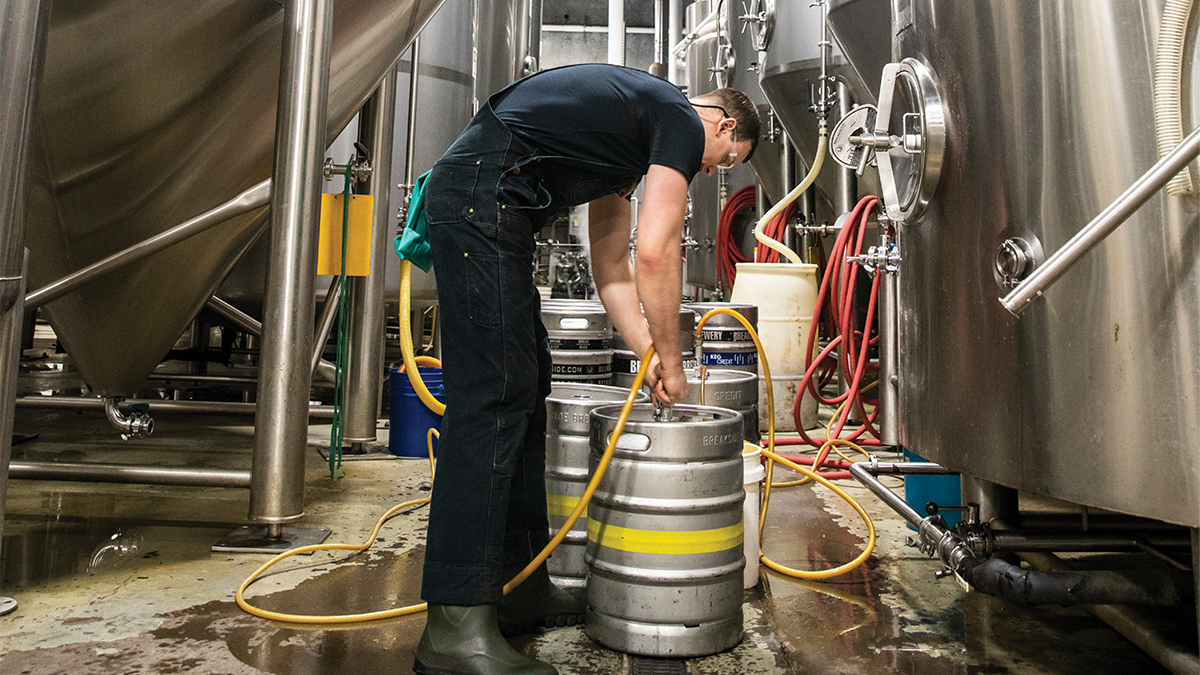Style: Ryewine / ABV: 9.9 percent
Breakside's French Quarter isn't just a great cocktail beer, it's an uncanny doppelgänger.
In fact, it tastes so much like Vieux Carré—the New Orleans-born blend of rye whiskey, cognac and sweet vermouth—that the bottle instructs you to pour it over ice instead of into a beer glass.
"We were kind of dumbfounded ourselves by it," says head brewer Ben Edmunds of the cocktail's bizarre resemblance to the beer, which Breakside first made in much smaller quantities four years ago.
The secret lies in the brewery's choice of ingredients. French Quarter features three types of rye, each adding a layer of complexity and a slick, weighty quality to the mouthfeel. It's then aged for 15 months in barrels that once held brandy, which isn't in the cocktail, but the spirit imparts the herbal qualities of vermouth and the smooth caramel of cognac to the nearly 10 percent ABV beer, along with a fruity, alcoholic zip to the aroma.
In harnessing the boozy notes of the barrel, French Quarter also toys with some of Breakside's critics.
"Too spirituous, too bourbon-forward" are common criticisms Breakside's wood-aged beers receive at competitions around the globe, says head of barrel production Daniel Hynes.
"In this kind of beer," says Edmunds, "I think that tendency works."
He's absolutely right. French Quarter isn't a cocktail-flavored beer, it's a beer cocktail. And in leaning into the booze and the rye, it's as slow-sipping as the original. But just like every finely mixed drink, it's not the easiest thing to make.
"This beer was a fighter," says Hynes, recalling how difficult it was to put so much rye through Breakside's brewing system; the sticky, huskless grain easily clogs the grates at the bottom of a mash tun.
It took a long time—until about 2 am, recalls Edmunds—to make it to the fermenter. We think it was worth the effort. Breakside does too. But Edmunds was further convinced when he saw a fellow beer writer try it side by side with the actual cocktail.
He, like us, could barely tell the difference.

